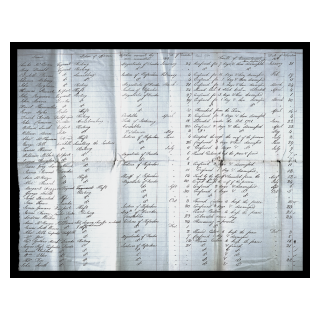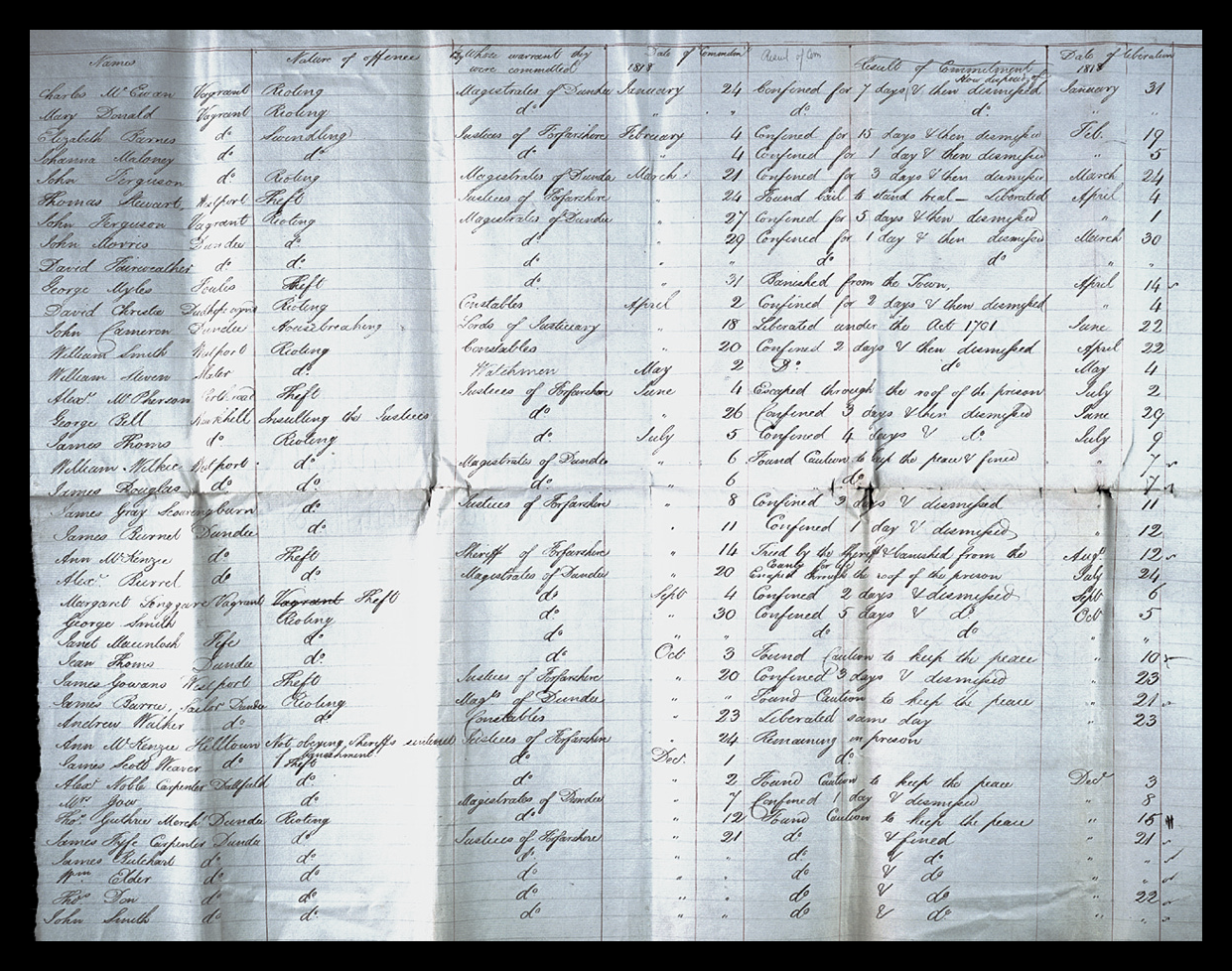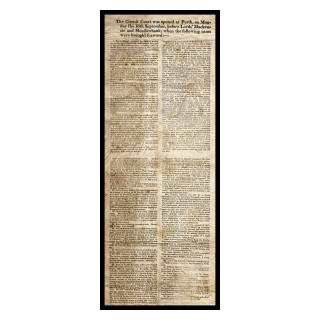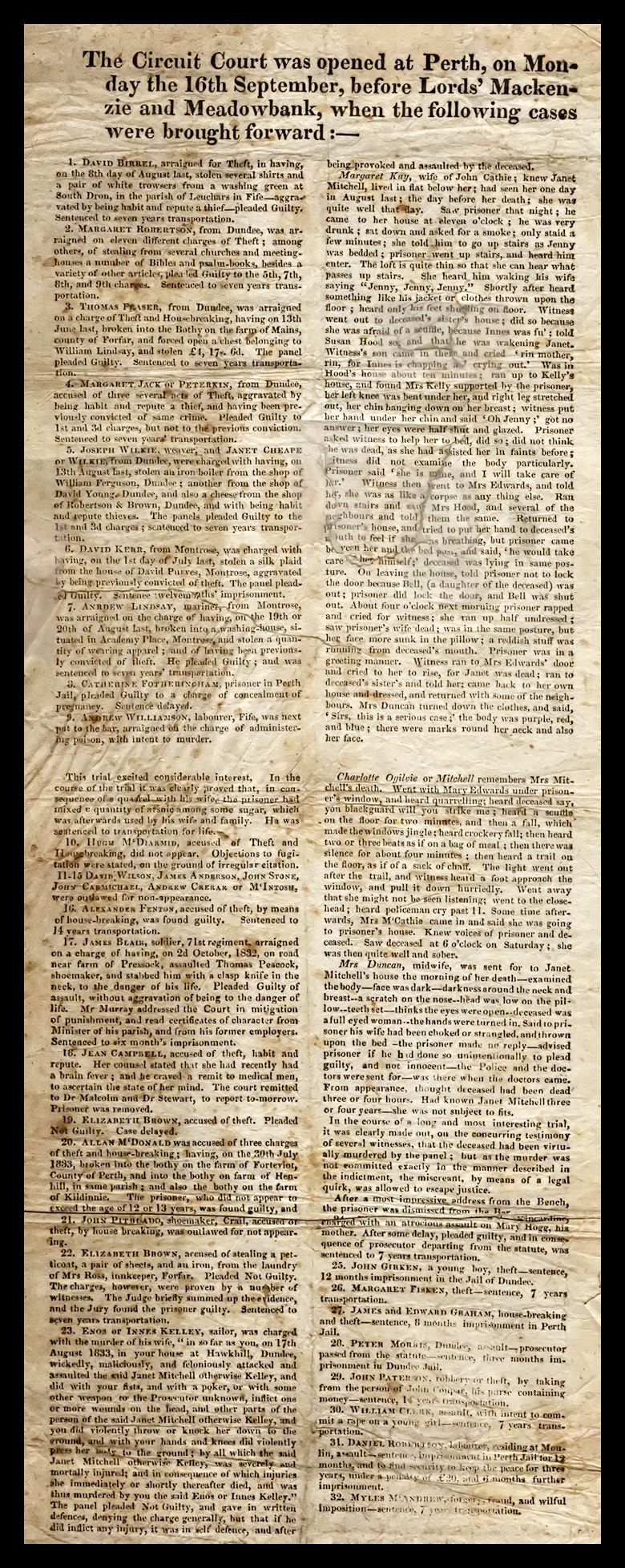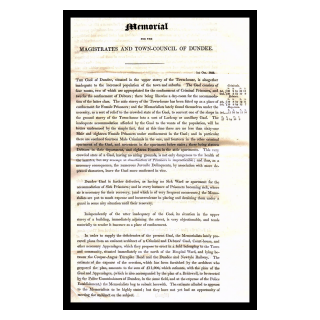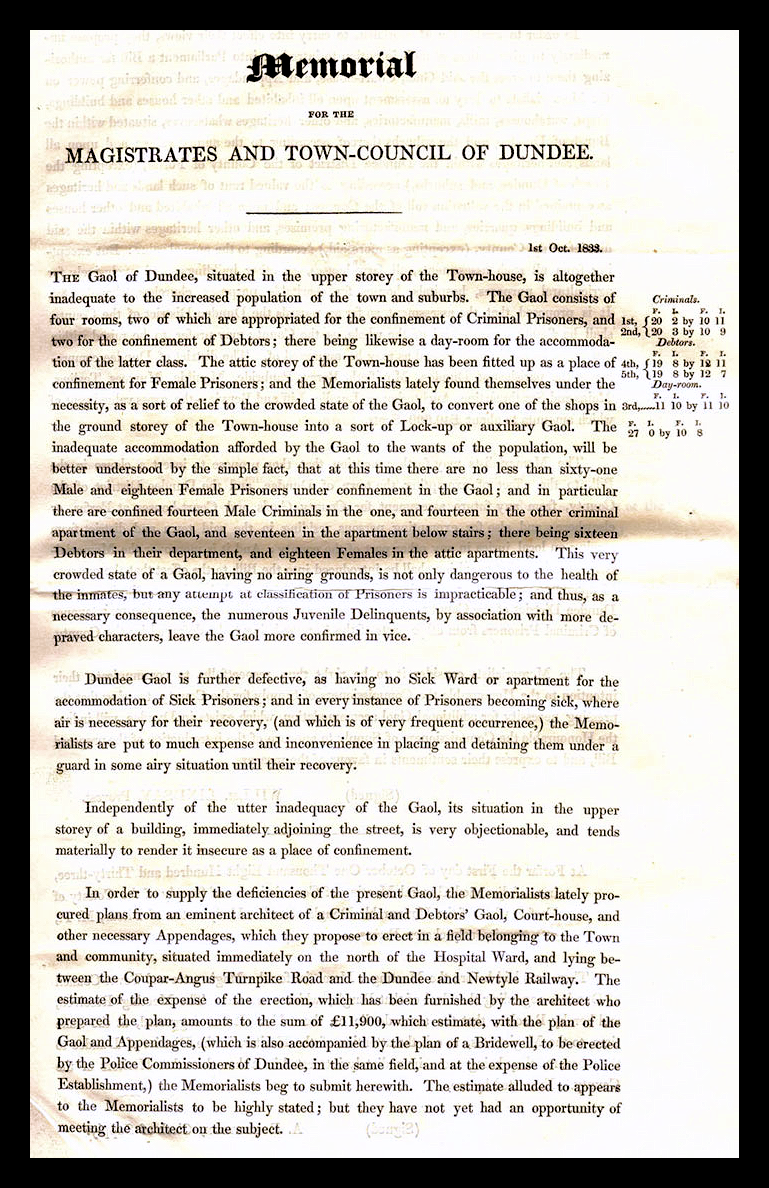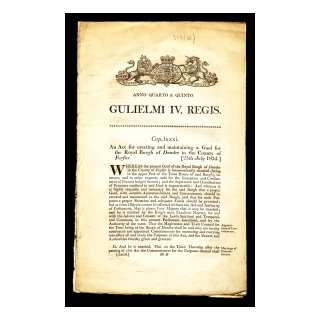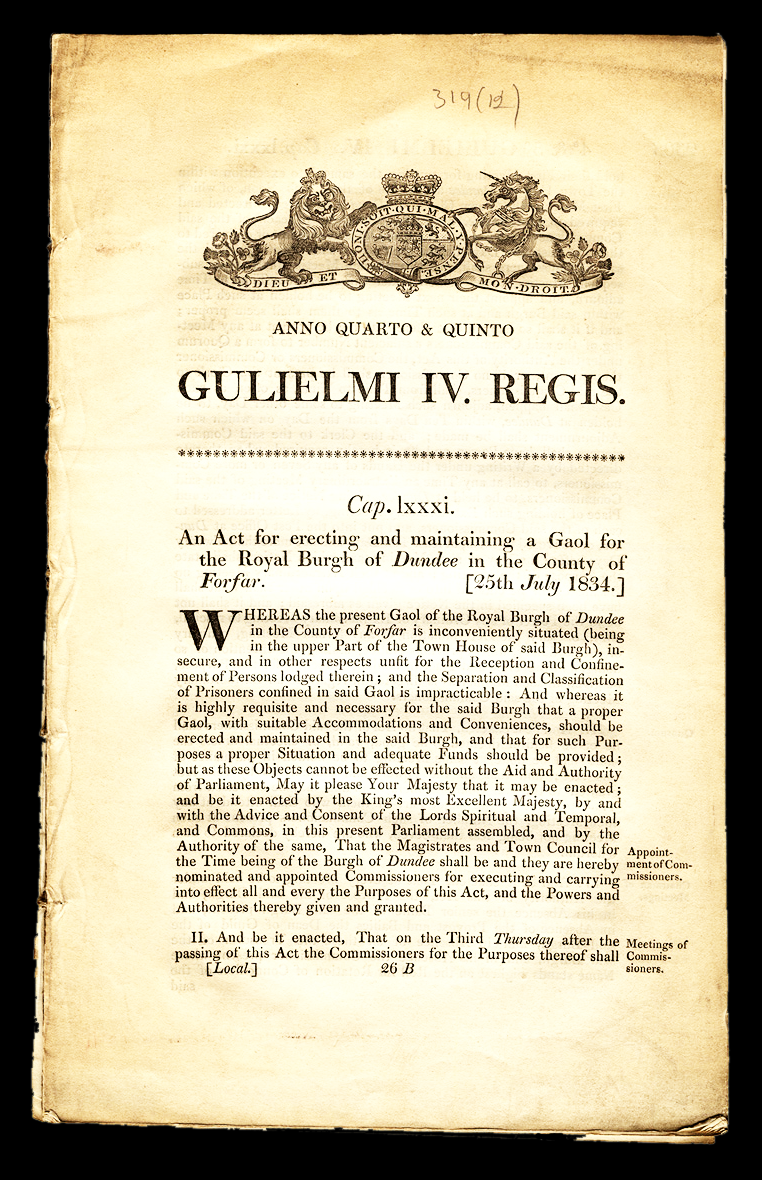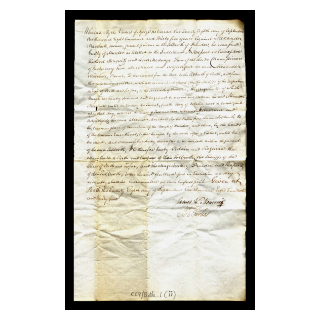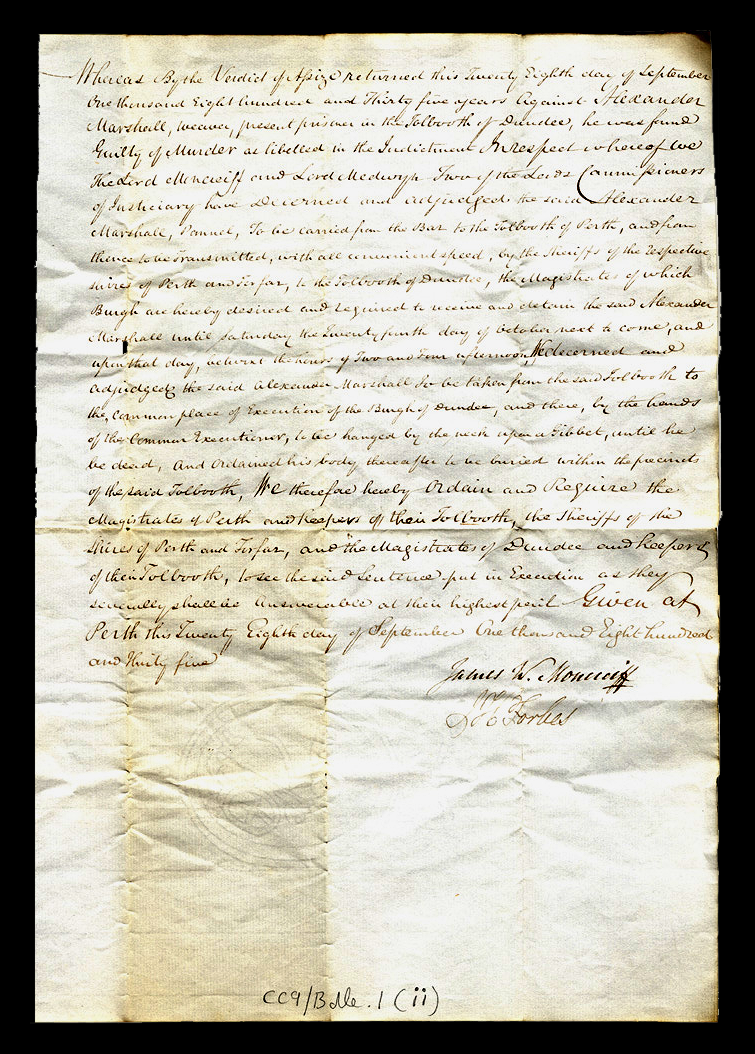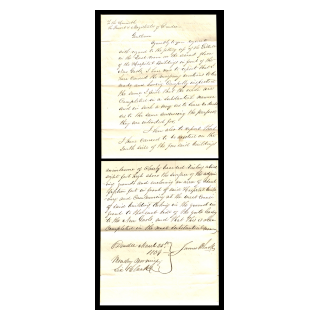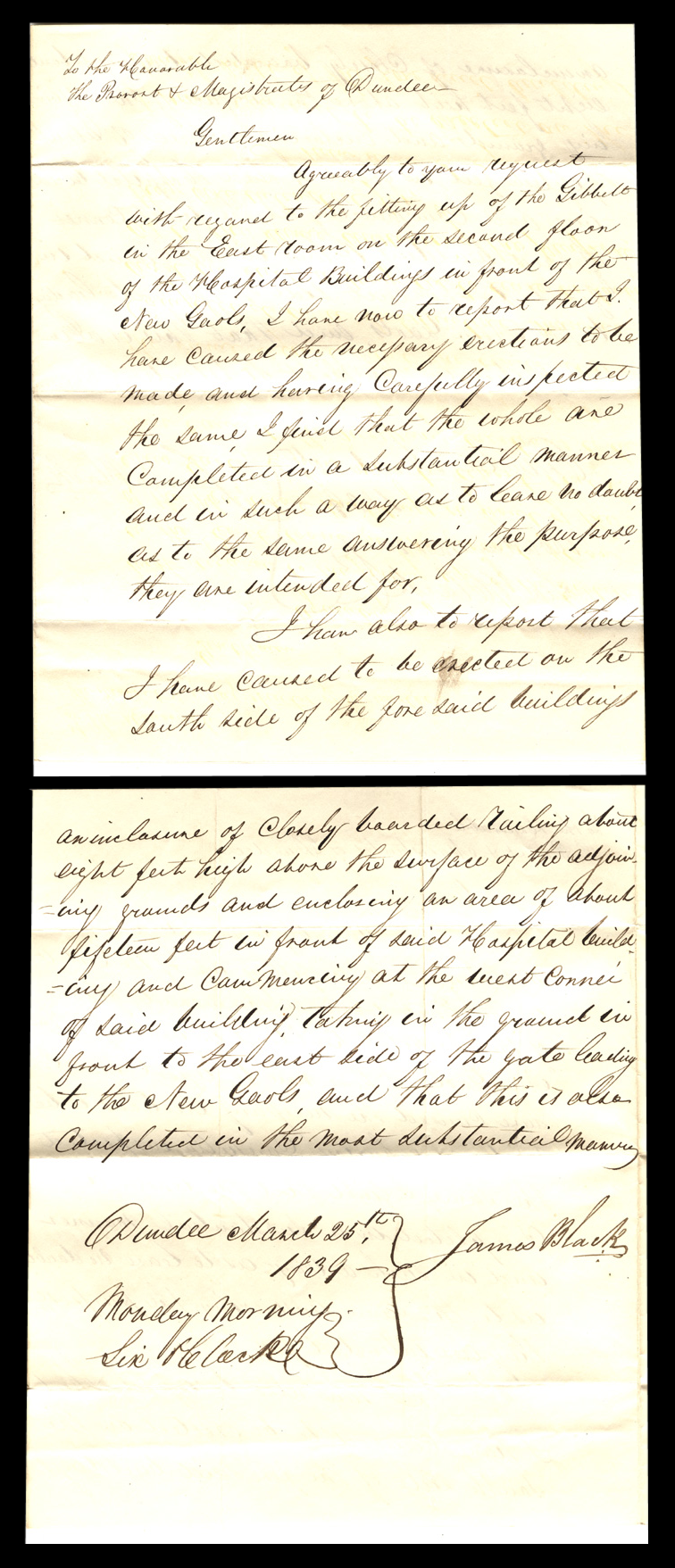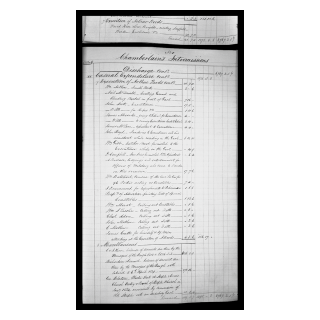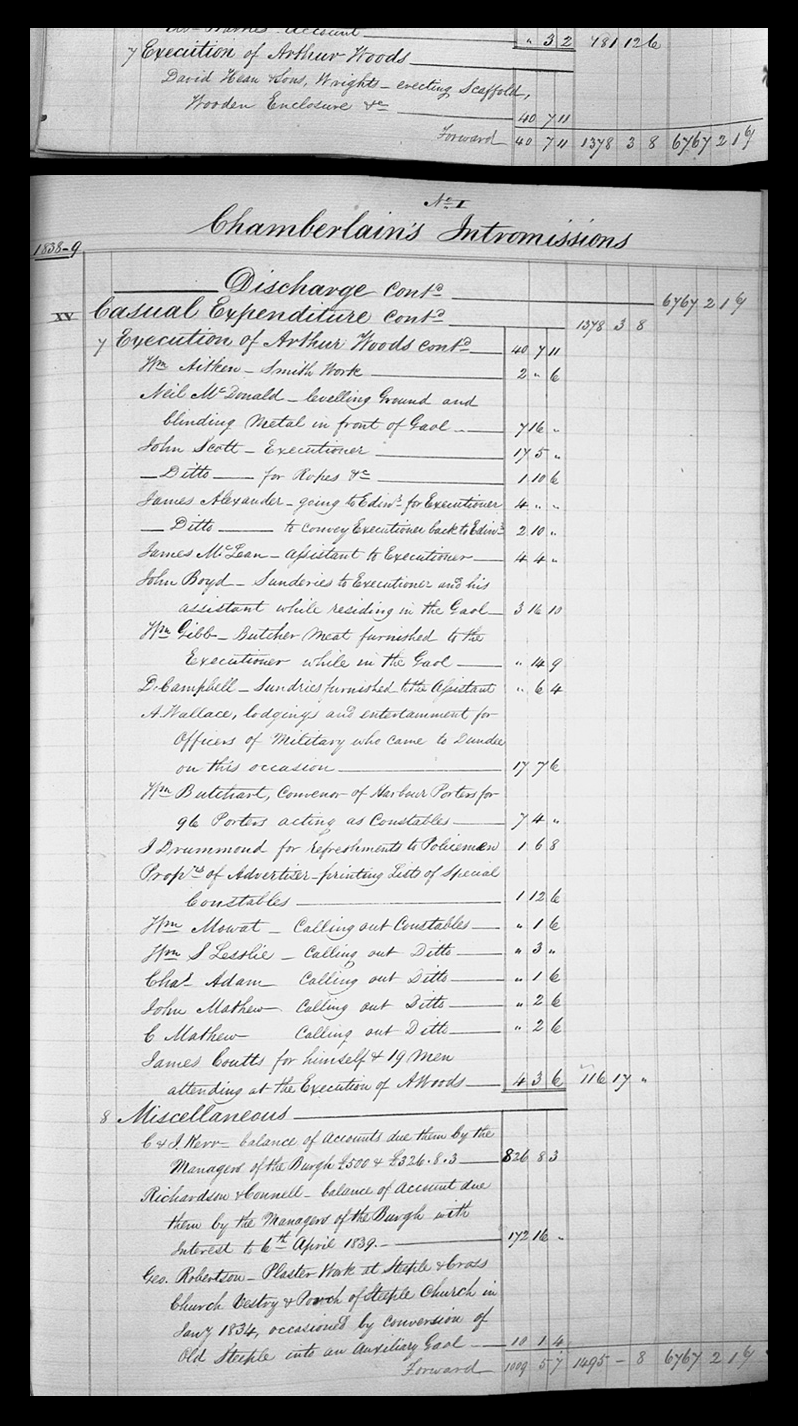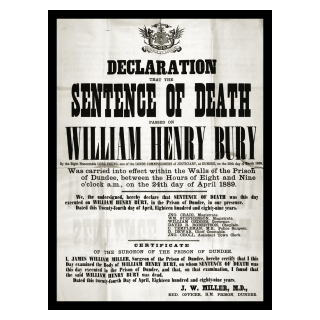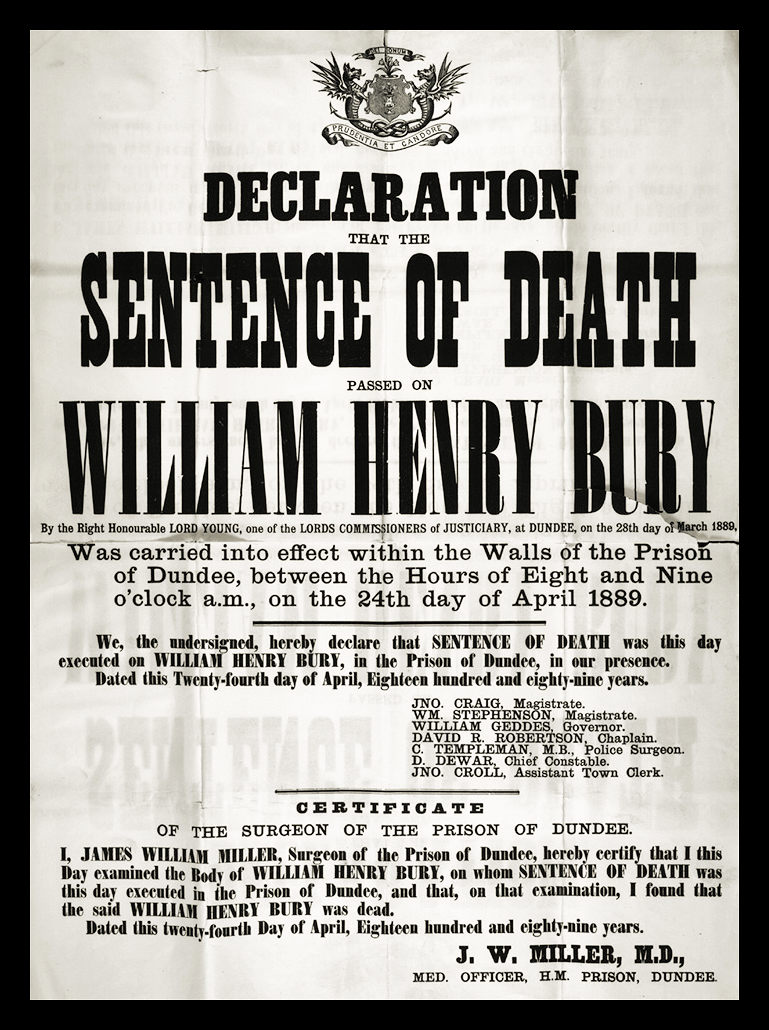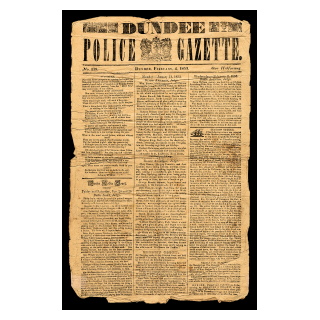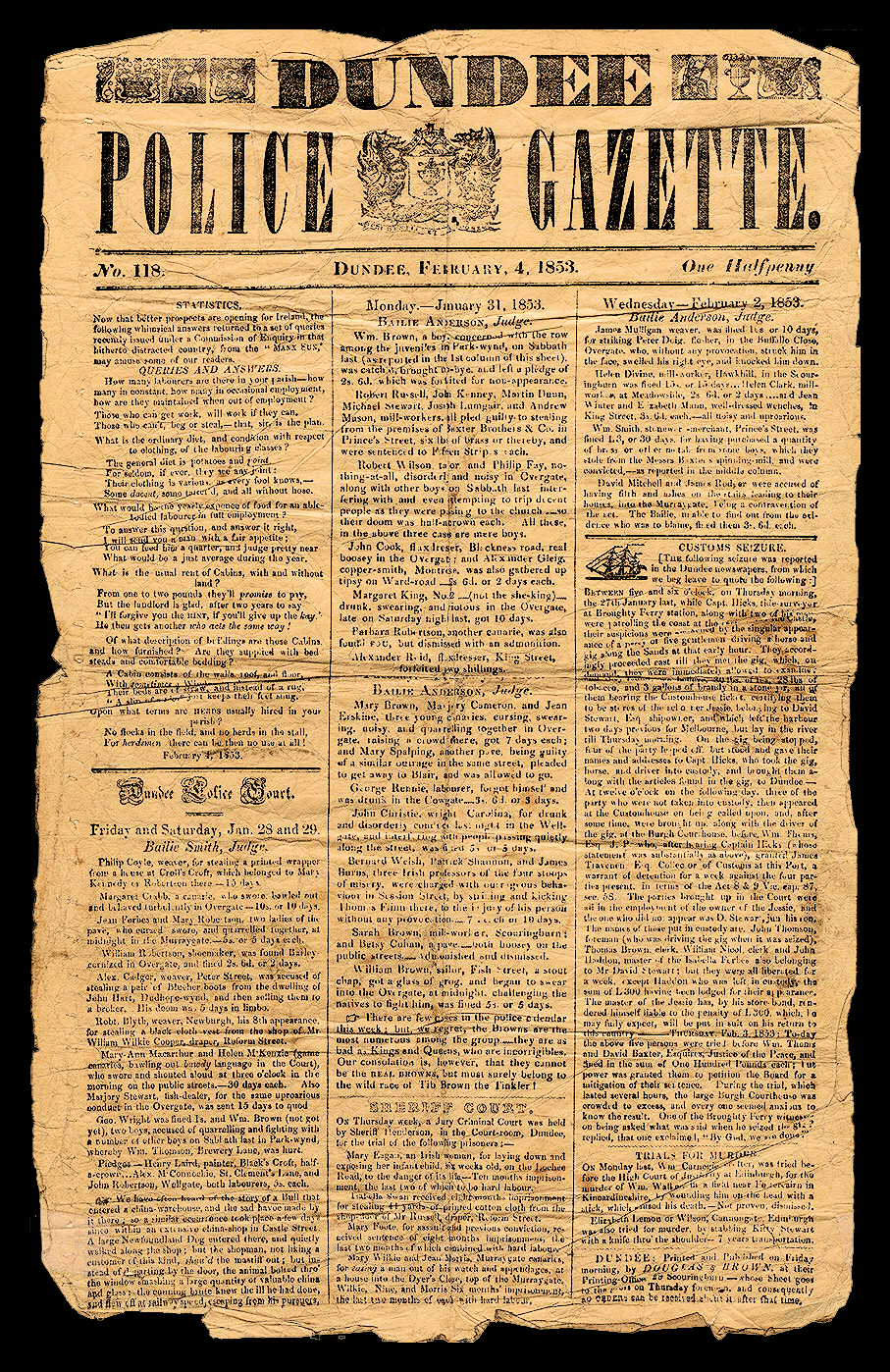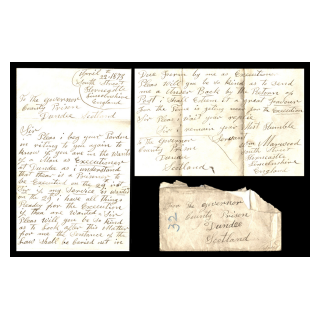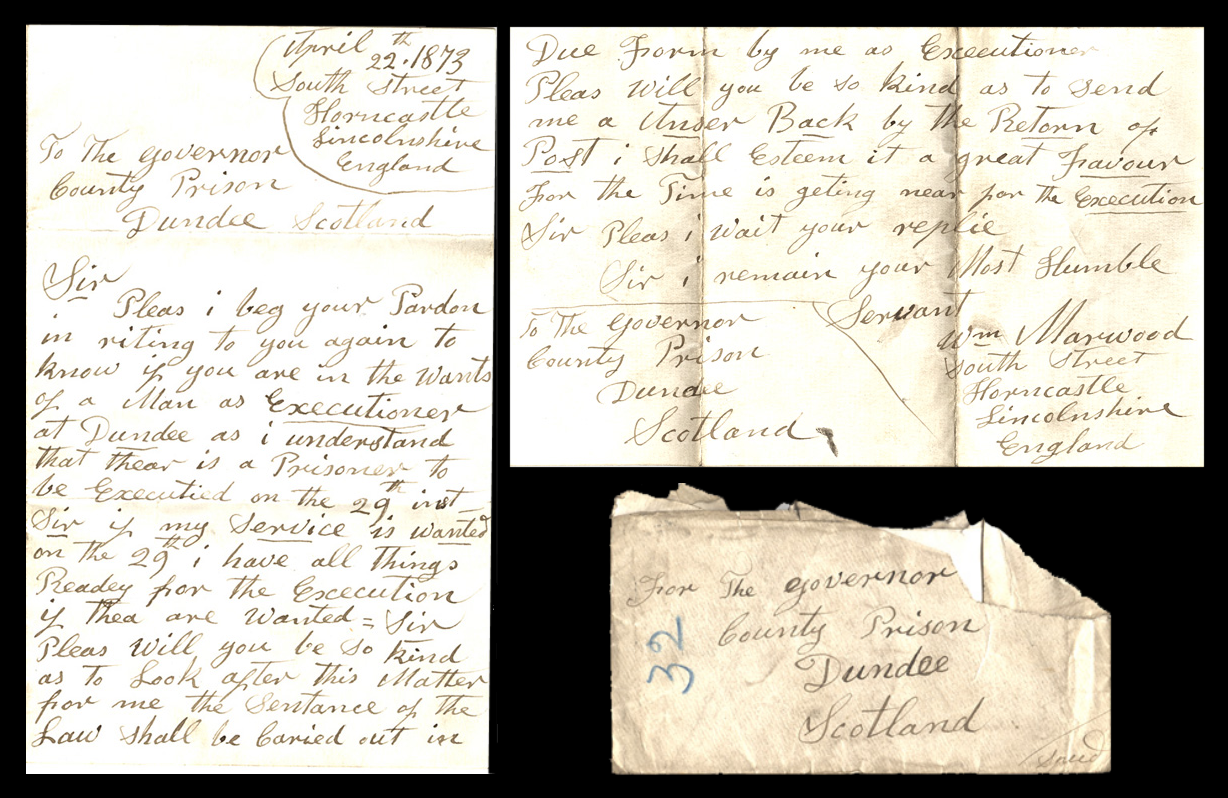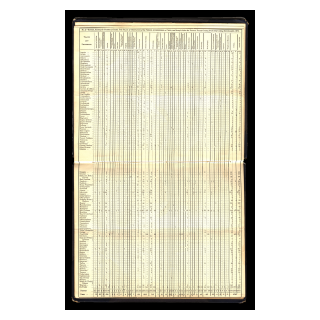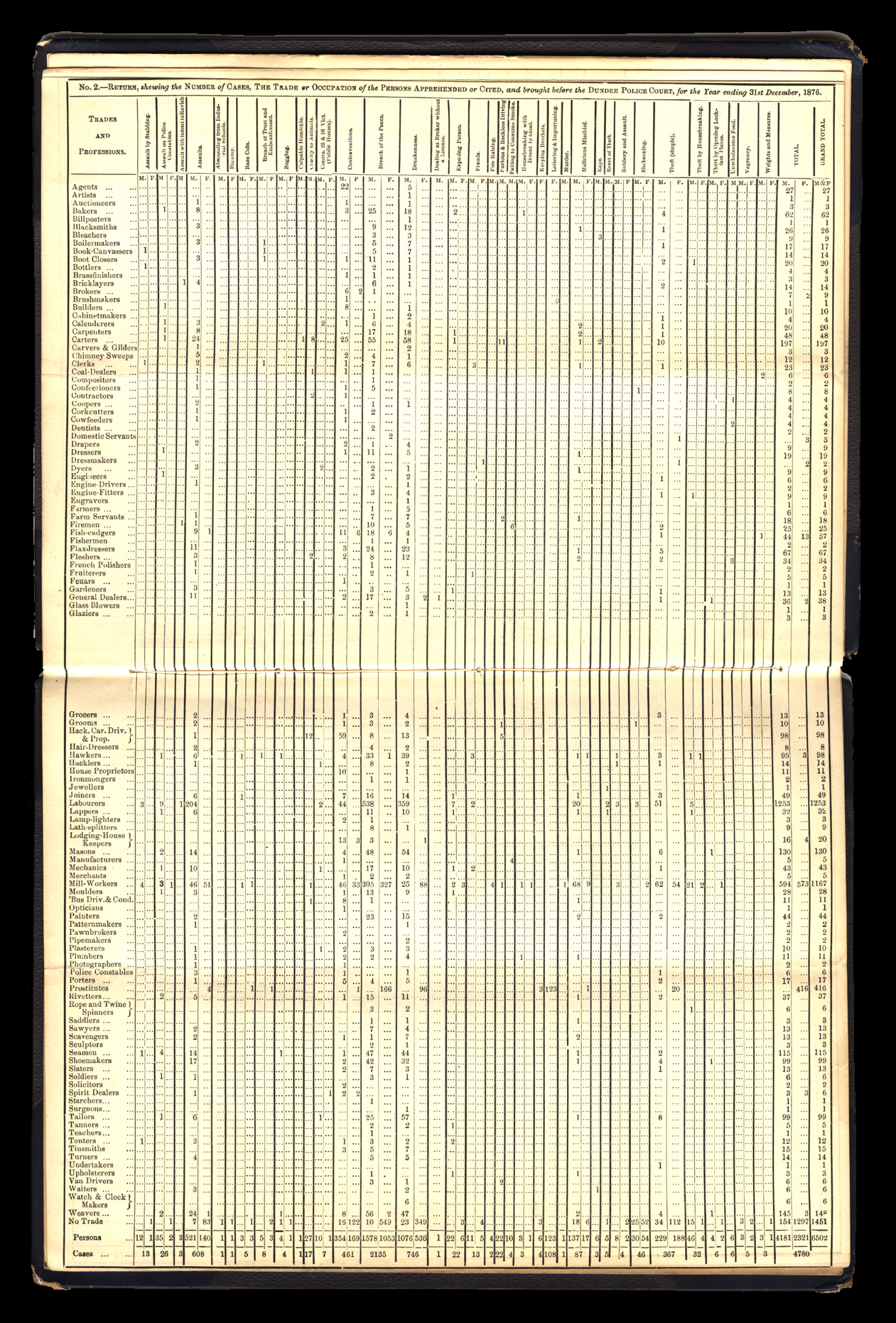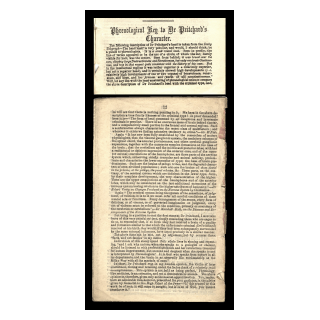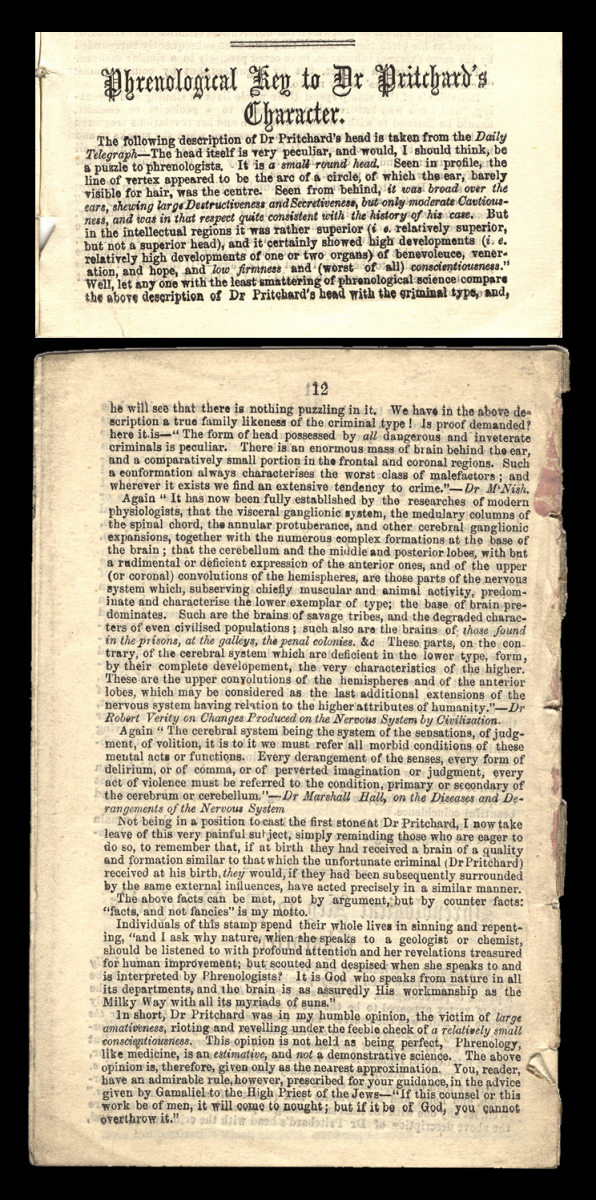Dundee in the 19th century was a rapidly industrializing town where population and crime rates soared, a police force was first appointed and a new jail was built. This was an era where a gibbet was built at the new Dundee jail for the public hanging of notorious criminals such as William Bury (thought by some to have been Jack the Ripper) and a person could be sentenced to 7 years transportation for stealing a pair of shoes. In fact, the early 1800’s saw escapes taking place from incarceration in the overcrowded old Townhouse Gaol and St. Mary’s Tower.
So why were the jails so crowded?
Dundee in the 19th century was a rapidly growing manufacturing town and shipping port, attracting large numbers of people from across Britain in search of work in the jute industry. With an increase in population and wealth, crime rates began to soar, reaching epidemic proportions in 1820–40, with housebreakings, thefts, assaults and robberies with violence occurring frequently. The well-to-do citizens of Dundee carried pistols as they traversed the dimly-lit streets at night due to attacks by disguised and masked ‘ruffians’ demanding for their ‘purses or their lives’.
Who was policing the town?
The first official police force – the Police Commissioners, were appointed in 1824, with responsibility for lighting, paving and cleansing the town, and a concerted effort to provide gas lighting and pathways began. Prior to this, the Town Council and Magistrates would appoint Town Officers, who would patrol the streets, fetter the prisoners and guard the jails. As the 19th century progressed, the powers granted to Police Commissioners gradually increased, allowing them to undertake major town refurbishments in the 1870’s. The granting of the ‘Police and Improvement Bill’ cleansing act in 1871 saw the destruction of many of the seedier, overcrowded slum areas of Dundee, which had been seen as the sources of many criminal activities.
Who were the criminals and what to do with them?
As the town quickly grew and changed, so too did the types of crimes committed. Rioting was common in the earlier part of the century, often over the price and availability of food. According to records of the Circuit Court from the 1830’s, thieves could receive at least 7 years transportation to Australia, while a bigamist could be sent to jail for 12 months.
A large number of people in the jail were imprisoned for the non-payment of debts and separate cells were kept for these prisoners. In the 1870’s, the problem with drunkenness had become problematic, and one policeman would bring in between 60 and 70 drunk men and women on a Saturday night.
In the late 1870’s, the crime of ‘shebeening’ (selling alcohol without a licence) was one crime committed by more women than men, and in 1877, fines imposed on persons selling liquor without a licence raised almost £300 in revenue for the police.
Temperance (anti-alcohol) reform was a wide-spread and influential movement throughout the 19th century. Breaches of the peace and assault were also common crimes in these years.
The Court System
The 19th century justice system consisted of two courts, the Sherrif Court and the High Court (based in Edinburgh). Both of these courts travelled on a circuit to different regional locations where cases would be tried. The most common crimes to be tried in the Sherrif Court were theft and assault, and more difficult cases were referred to the High Court – the supreme criminal court of Scotland.
Punishment
In addition to being sent to Dundee jail or being transported to Australia, punishments included being sent to one of a number of other correctional institutions. Not only criminals, but people (especially children) ‘at risk’ of becoming involved in criminal activities, could be sent to industrial schools. It was hoped that the kind of practical education provided in these schools would prevent them from slipping into a life of crime.
A number of these correctional facilities that were established were:
- The Rossie Reformatory
- The Dundee Industrial School
- The ‘Mars’ Training Ship for Wayward Boys
- The Female Rescue Home for ‘Fallen’ Women
Notorious Crimes
A number of hangings took place in Dundee in the 1800s, usually for the crime of murder. The last man to be publicly hanged was Dr. Edward William Pritchard in 1865, who had achieved some notoriety in the media for his crimes.
Below can be read a study of the doctor’s head by the 19th century science’ of ‘phrenology’ which claimed to be able to identify criminals by the shape of their skulls [L313(8–20]. The last execution by hanging took place in Dundee in 1889, with the death of William Henry Bury, thought by some to have been Jack the Ripper (due to his untimely arrival in Dundee at the same time as the ‘Ripper’ murders in London stopped).
In the case of Arthur Woods, a gibbet was built especially for his hanging at the new Dundee jail in 1839. A number of death warrants are contained in the Lamb Collection, however, not all of them were carried out – Royal pardons could be applied for and were granted to those lucky enough to have someone intervene for them.
Another trial to have achieved notoriety was the trial of of Mary Elder, or Smith, in 1827, who was more popularly known as “The Wife o’ Denside” and had many ballads and stories written about her. She was accused of murdering her maid-servant, Margaret Warden, by administering arsenic.
A jury returned a verdict of “Not Proven” against her, though popular opinion condemned her as guilty [Lamb no. L312(2)]. Boxes 312 & 313 in the Lamb Collection contain a number of trial cases from the 1800’s.
This information can be found in original documents contained in the Lamb Collection, Dundee Central Library and Dundee City Archives. A large portion of the material has been digitised and is available for online viewing at www.trove.scot.

